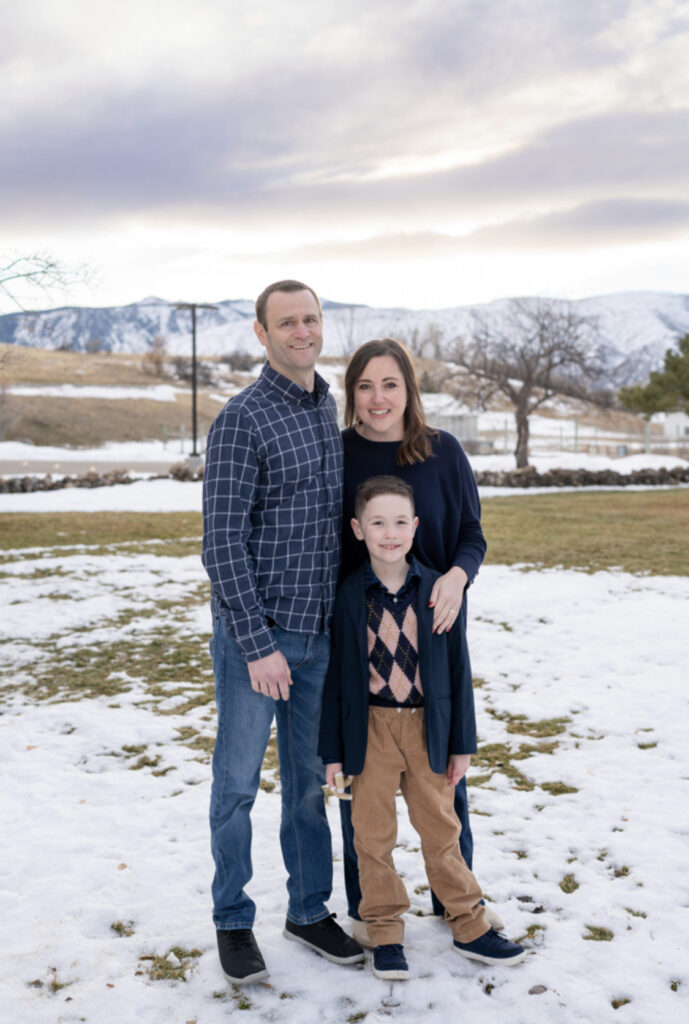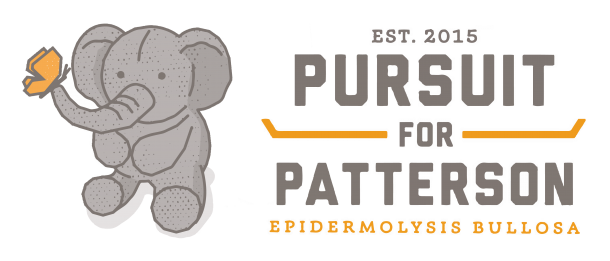
Patterson was born on May 31, 2015, in Bellevue, WA, right outside of Seattle. I had a c-section, which was disappointing at the time, but looking back, probably saved Patterson from a super traumatic birth. He immediately displayed missing skin on his fingers and had some small spots of what looked like blisters on his feet and knees. He was otherwise thriving, so he stayed with us in our room at the hospital. The doctors chalked it up to “maybe he was sucking his fingers in utero”. But soon after when the nurses came in to do some of their tests, and did a heel prick, another injury appeared. It took the skin right off his heel. Still, we were kept in the dark.
The doctors started coming in suited up in what looked like HAZMAT suites, and little to my knowledge, they had posted signs on our door that were to enter with caution. They put little notes on Patterson’s bassinet that stated he had “owies” and to be gentle.
A week later, we arrived at home, with the discharge paperwork telling us to “keep an eye on his skin” and “contact his pediatrician” with any concerns. We literally called or went to the doctor every day. For weeks. Finally, we were able to see our assigned Pediatric Dermatologist- Dr. Virginia Sybert. We were a part of the group health system, so it was who was in our network. AND, thank goodness it was her. She also is a professor for University of Washington as a Geneticist. We were able to biopsy Patterson within his 1st month, and did receive confirmation from Stanford, that Patterson did in fact have Recessive Dystrophic EB.
That diagnosis was tough. Patterson didn’t look like the pictures online you see of kids with RDEB- as you may have recognized from the pictures being shared. But he also was having issues daily with his skin, so we didn’t feel he was mild either. What we did find in our genetic report is that I have the gene abnormality associated with EB, and Peter had an undocumented abnormality, which produces a deformed version of collagen VII to be present. I think it’s important to recognize that Patterson isn’t probably a good visual of the devastation of this disease. And although I am grateful for that, it’s important to understand that there are still major setbacks to the quality of life he has, and that although he looks pretty “normal”, all of that can change within a minute. Some of what you don’t see in pictures are what is under the bandages. But also, the itch, inflammation, pain…
The first few years were difficult. With every stage of development came new anxieties and ways to adapt. Patterson participated in OT/PT, regular checkups, EB clinic checkups at Stanford, I think Peter and I were so fixated on making sure Patterson had the best care, the best life, the best possible outcome, we just realized we were driving ourselves to burnout.
Fast forward a few more years, and we are still facing new challenges, but overall, we have found a routine that works, and manage day to day treatment pretty well. Patterson is active in Music lessons, swimming, cub scouts. He even takes a Karate class (sparring included)
Patterson is Kind. His superpower is his heart of gold. He is funny, light-hearted, brave, and empathetic. He loves to play with Legos, draw, listen to music, and be with friends and family. Patterson is also very self-aware. He is watchful. Flexible. Adaptable. These are essential characteristics we have all grown into as a family. We have to.
He recently was asked about EB and he stated that ” I feel different. Sometimes I feel left out because I know I can’t do things other kids can do. ”
Isolation is a theme with EB. You give up precious time doing things like dr. appointments, bleach baths, painful bandage changes. It comes at a cost of something. Time, activities, events. Patterson finds himself cautioning activities with other classmates, opting out of birthday parties at gyms or trampoline fun centers. Making decisions at 7 if the pain is worth the experience. And yes, typically it is. Patterson gets up every day and doesn’t complain. We do our best to give him what little control we have over this disease. He chooses which areas we will start our bandage change. He chooses which show to watch on the iPad. He participates in making decisions on if we need to protective bandage an area, or let it have air. We want him to gain independence, and advocate for himself. Have just a bit of sense of control.
There are no words of gratitude that capture our feelings of heartfelt appreciation for all who have donated, advocated, and supported us along our journey.
This grass-roots venture of P4P has been created to support other EB families and allows us to donate money directly to research that has given us hope there will be a cure in Patterson’s childhood.









